Come check out the secret to preserving the endangered Roseline Torpedo Barb fish species in a community aquarium. This guide provides feeding, environmental, and many other care tips for a long and healthy life.
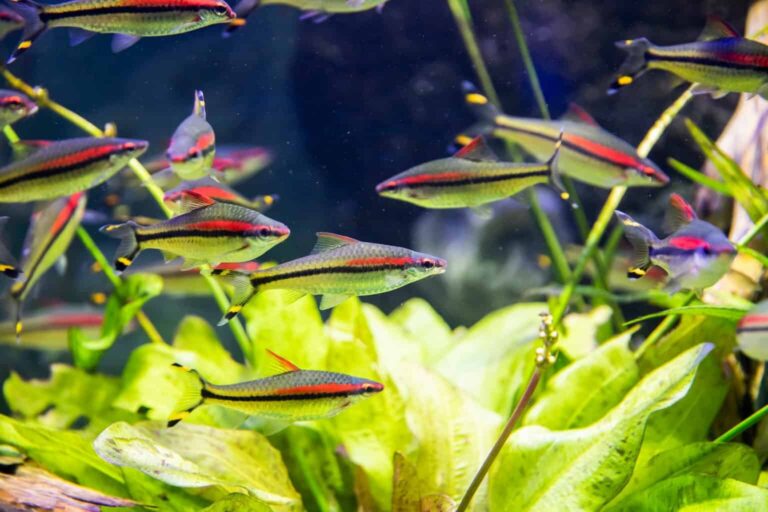
Introduction
Denison Barb, Roseline Torpedo Shark, Sahyadria denisonii, Dawkinsia denisonii, or Red-Line Torpedo Barb are three common names for this freshwater aquarium torpedo fish.
Having a sleek body, red stripe scales, and an active swimming nature caused the creation of these multiple nicknames.
This Roseline Torpedo Shark introduction will show you more about this species, including its peaceful temperament, which makes it suitable for planted community tanks.
Author’s Note: Check out our post on the 14 Small & Big Freshwater Pet Sharks for more Freshwater Home Aquarium compatible shark lookalikes.
Keep reading to learn all you need about Sahyadria denisonii care.
Native Habitat and Natural Behavior
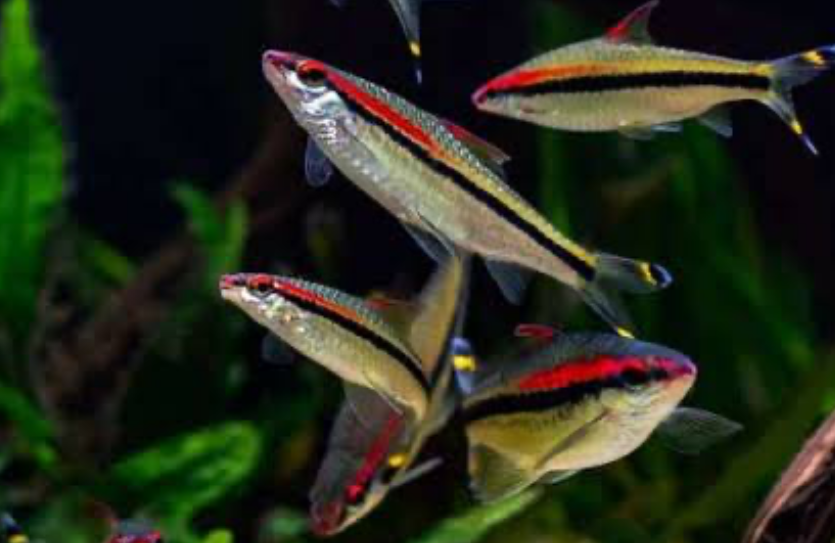
Roseline Torpedo Shark is an Indian freshwater fish species hailing from the fast-flowing streams in the Western Ghats.
As stream-dwelling aquarium fish, this species needs well-oxygenated water and shoals to survive. Here’s a detailed guide on mimicking Denison Barb’s natural habitat.
Aquarium Setup for Optimal Health and Activity
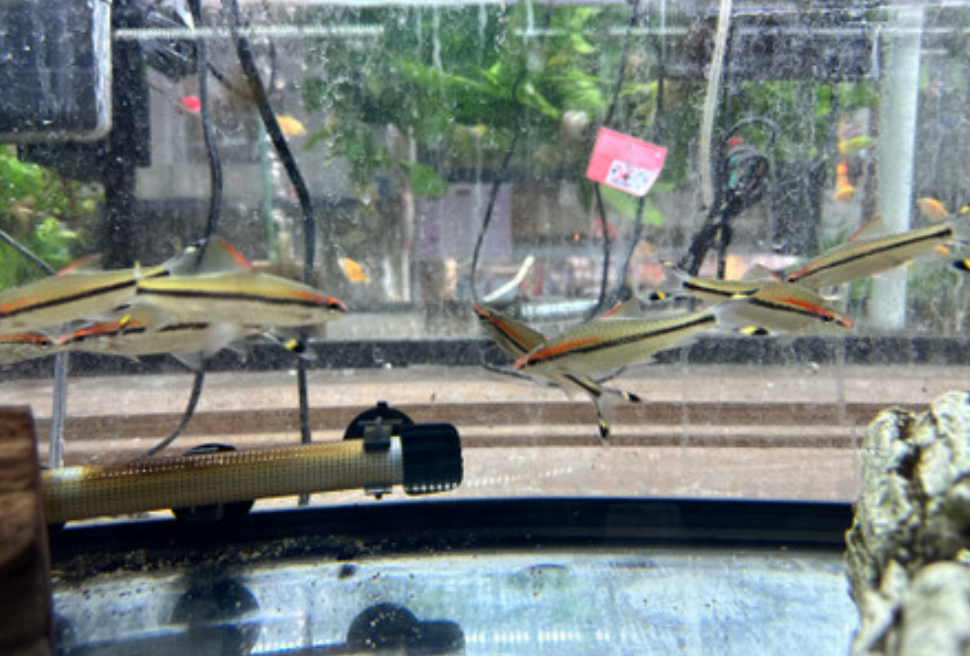
We’re about to build a Roseline Shark tank setup suitable for their unique features, from their bodies to their feeding and temperament. It includes the average tank size, layout preference, water condition, and decor.
Tank Size
A mature Roseline Torpedo Barb fish is 3.5-5.9 inches (9-11 cm) long and typically moves in a group of 5-6, so you’ll need at least 55 gallons of water to comfortably house them.
Once you’ve chosen the tank, it’s time to design the Sahyadria denisonii aquarium layouts.
Tank Features
Firstly, you must understand that this is a fast-water fish tank guide. Cover the floor with smooth substrate like fine sand or well-rounded rocks and enrich them with dense side planting and driftwood.
Set the water current to a strong flow to encourage their active swimming nature.
Water Quality
Finally, ensure the tank’s optimal water quality, from the temperature range to the pH level and hardness.
| pH level | 6.5–7.8 |
| temperature | 72–79°F |
| hardness | 5-25dH |
Without maintaining proper water parameters, the tank’s water quality can degrade, which can cause a wide range of issues from cloudy aquarium water to illness and mass die off.
Physical Appearance and Identifying Features
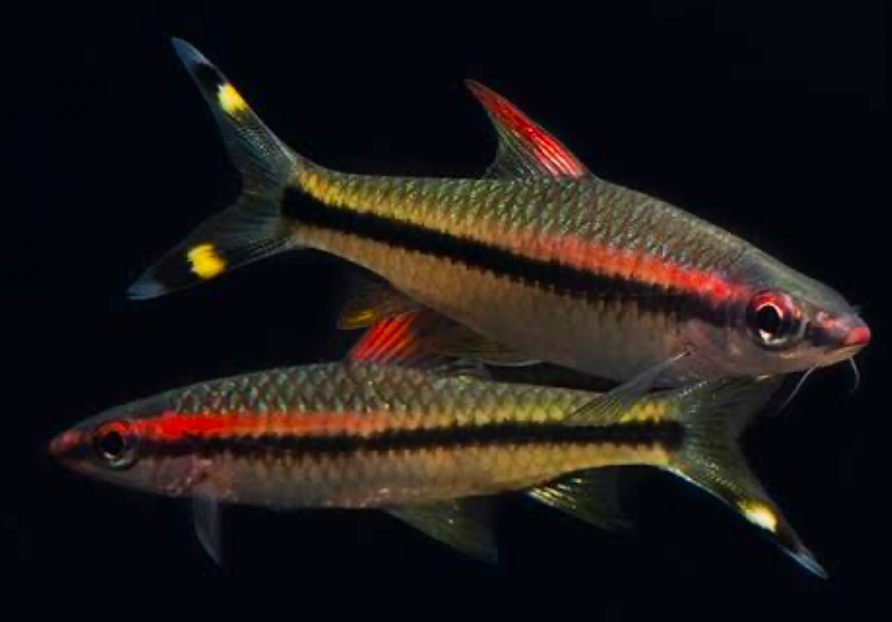
When identifying Roseline Torpedo Shark fish, you can look at their bodies and personalities.
This fish’s silver body, bold red stripe along the lateral line, yellow-black dorsal fin, and streamlined torpedo shape are easy to identity. Additionally, note their average adult size, which is 5–6 inches.
Color Pattern
This colorful shoaling fish has multi-layered hues on its scales. Its body is silver with a bright red lateral stripe across its snout to its mid-body and short fins.
There’s also a thick black line across its fish’s side down to its tail fin with two short yellow stripes on each forked side. As this torpedo-shaped freshwater fish matures, it develops green or blue hues on its head.
Unique Traits
Because of its torpedo shape, this small fish species is an energetic swimmer. Since it moves in groups of 5-6, the synchronized swimming becomes mesmerizing for any onlooker.
That’s why it became a popular aquarium pet.
Feeding Routine for Vibrant Color and Energy
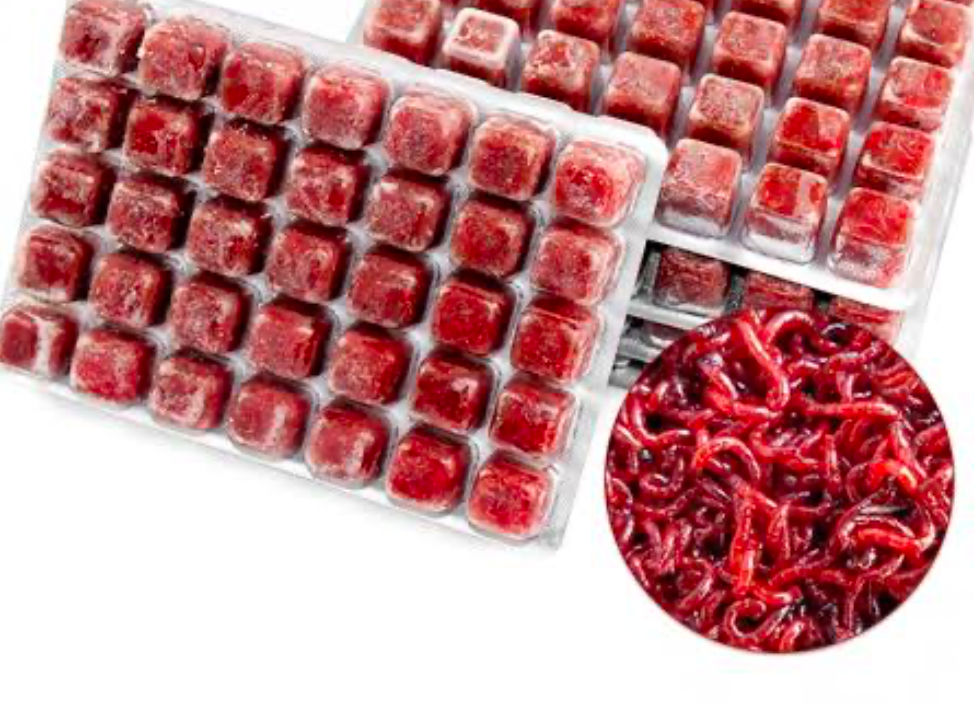
Preparing proper nutrition for active aquarium fish requires precision. Roseline Sharks are omnivorous pets that need a variety of food sources for healthy growth.
Diet Suggestions
Follow these Roseline Shark diet tips for the best results:
- Staples: insect-based pellets, high-quality flakes, frozen bloodworms, and daphnia.
- Supplements: Spirulina flakes, Blanched vegetables like zucchini.
Author’s Note: For more on feeding your aquatic pets check out The Ultimate Guide to Fish Food: Pros and Cons & Best Choices!
Feeding Frequency
Regulate the portions when feeding Sahyadria denisonii to avoid food-related health issues like malnutrition, overfeeding, and leftovers contaminating the water.
Serve small portions that can be finished in less than 3 minutes, only 2–3 times daily.
Compatible Tank Mates for a Harmonious School

You can add other Roseline Shark community fish species to your tank for a vibrant visual display. Choose only fast-moving, peaceful fish for planted tanks as companions.
You must ensure schooling species compatibility to reduce stress and aggression and encourage natural shoaling.
Compatible Species

Some ideal options for your aquarium include other small to medium-sized, peaceful species, such as rainbowfish, peaceful barbs, rasboras, and corydoras.
Species to Avoid
Don’t pair your Roseline Shark with tiny, slow-moving, fin-nipping fish or large, aggressive species like Angelfish, Guppies, and Bettas that’ll bully them.
Breeding in Captivity: What to Expect
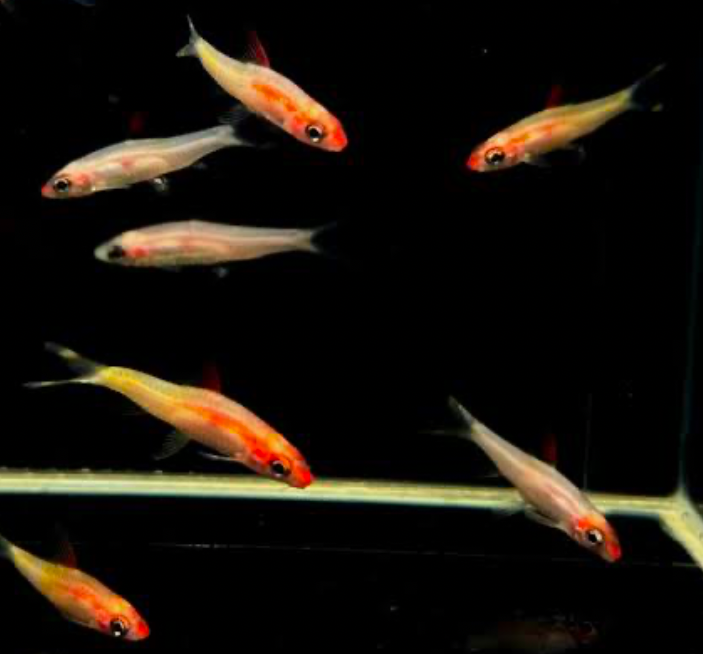
Because of its endangered status, I recommend reproducing this species, although breeding Sahyadria denisonii outside their natural habitat is complex.
It’s best to leave this process to expert aquarists with commercial farms due to the home aquarium breeding challenges you’ll face. If you choose to continue, here are general notes on sexual dimorphism and conditions to help you succeed.
Breeding Difficulty
Successful reproduction of torpedo barbs is rare, except in a commercial setting with injected hormones. Over the years, expert breeders have recommended group breeding in simulated monsoon conditions.
Make small water changes and increase their protein intake two weeks before the breeding day.
Sex Differences
To successfully breed this species, you must distinguish males from females. Note that the female Roseline Barbs are rounder, larger, and have duller scales than the males.
Health Concerns and Maintenance Guidelines
Ensuring Roseline Shark’s healthcare is a full-time job that starts with providing an ideal aquarium environment.
Your pets are prone to concerns such as poor oxygenation, stress from small groups, and ich in fluctuating water conditions.
Preventative Practices
Consistent care practices like weekly water changes, consistent heavy water flow, adequate oxygenation through surface agitation, and provision of compatible tank mates help with freshwater fish disease prevention.
Warning Signs
Once you do your best in maintaining active fish species, you’ll quickly notice illness signs and abnormalities like lethargy, dull coloration, and labored breathing.
Lifespan and Care Commitment
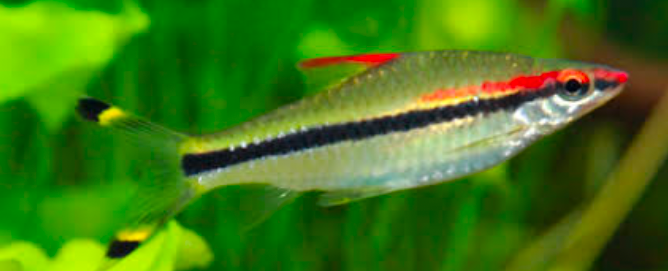
Unfortunately, collecting this fish as a pet made it an endangered species. So, it’s a rare aquarium pet whose ownership is often regulated.
If you want to join the exclusive owners, you must commit time and resources to this active fish species long-term care.
Size and Growth
This species reaches up to 6 inches as adults, while rare specially-bred Denisons can grow up to 15 inches.
Long-Term Needs
With proper midwater swimmer maintenance, such as enough swimming room, enrichment through natural décor, and adequate and appropriate feeding, you can extend your Sahyadria denisonii’s lifespan by about 5 – 8 years.
Conclusion: An Eye-Catching Centerpiece for Larger Freshwater Setups
Clap for yourself because you’ve reached the end of this Roseline Torpedo Shark care summary. Let’s recap why this endangered species became a leading centerpiece fish for planted tanks:
- It’s a visual beauty
- It’s a fast shoaling species
- It has a calm temperament despite being active.
All you need to achieve Sahyadria denisonii aquarium success is an ideal environment and care needs. Scroll up for the details on each care requirement, then let’s hear about your experience in the comment box below.


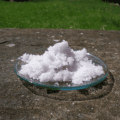
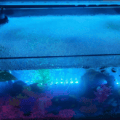
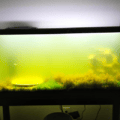





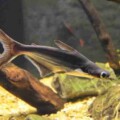
1 thought on “Roseline Torpedo Shark (Sahyadria denisonii): A Peaceful Streamlined Beauty for Freshwater Tanks”